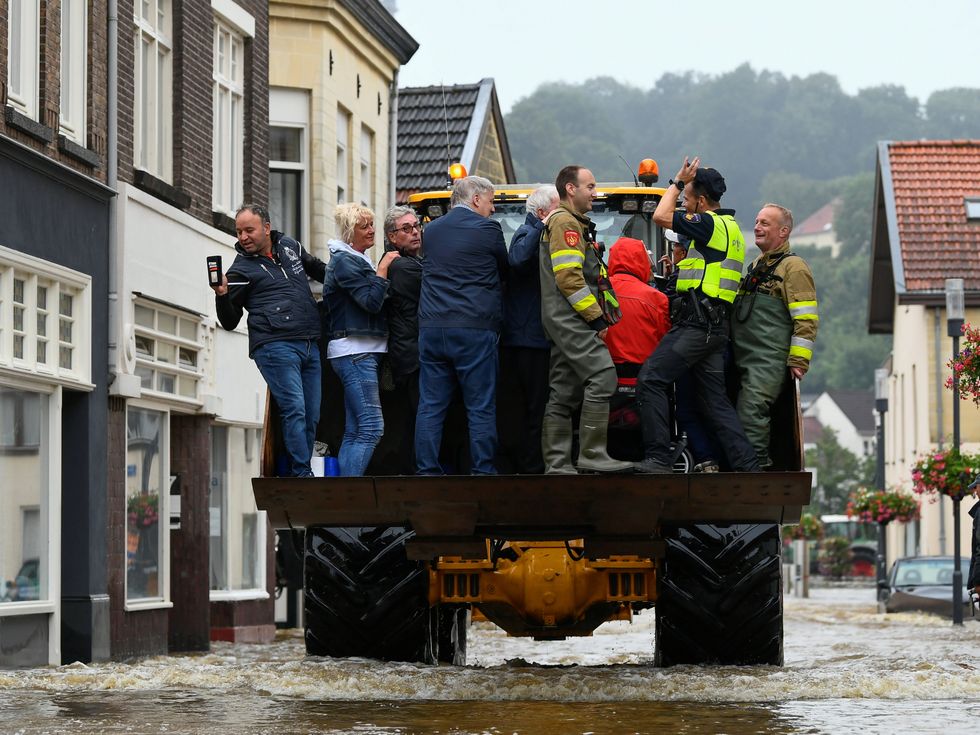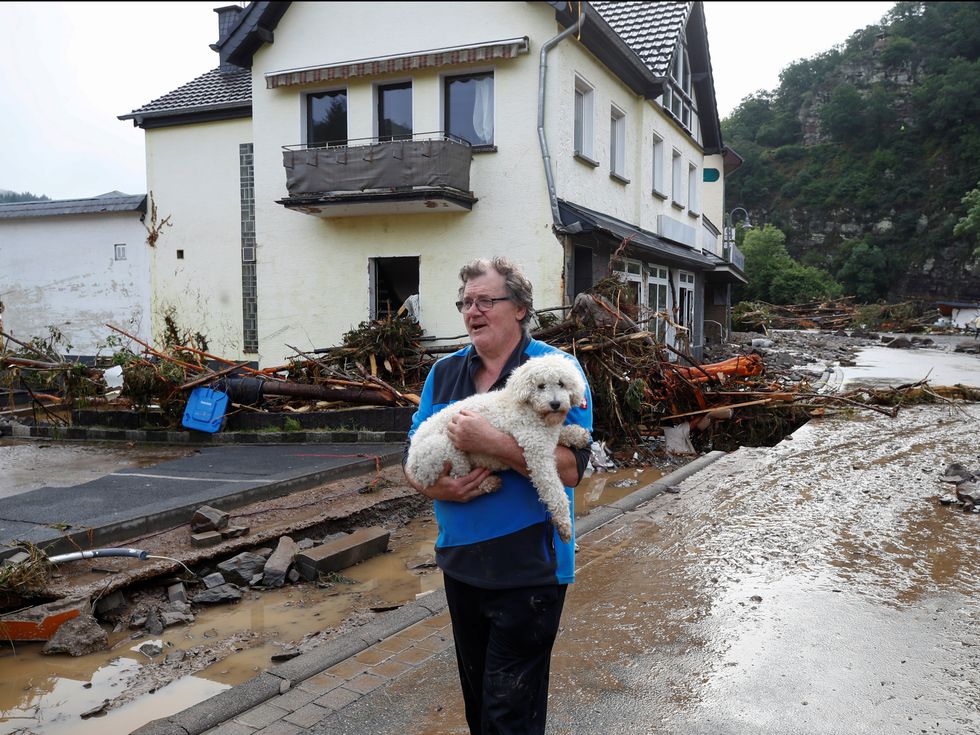More than 150 people have died and hundreds more are missing after western Europe was hit by some of the worst flooding in decades.
Record rainfall caused rivers to burst their banks on Wednesday and Thursday, turning streams and streets into raging torrents that swept away cars and caused homes to collapse.
Some of the most dramatic scenes have been found in the German village of Schuld, in Rhineland-Palatinate, where some 200,000 homes have been left without power and a state of emergency declared.
Deluges also hit Switzerland, Luxembourg and the Netherlands, where dozens of people were evacuated from their houses, but Germany and Belgium remain the worst-hit countries, with towns and villages submerged.
The death toll in Germany now exceeds 110, while at least 14 people have been confirmed dead in Belgium. However, with more than 1,300 people still unaccounted for in North Rhine-Westphalia and water levels continuing to rise, the already devastating loss of life is set to get far worse.
Here, we take a look at the extent of the catastrophe so far, as rescuers scramble to find survivors as entire communities lay in ruins:












The devastation, which has already claimed more than 150 lives, represents Germany’s worst mass loss of life in years.
Authorities in Rhineland-Palatinate said 60 people had died there, including at least nine residents of an assisted living facility for people with disabilities. In neighboring North Rhine-Westphalia state officials put the death toll at 43, but warned that the figure could rise further.
In addition, mobile phone networks have collapsed in some of the flood-stricken regions, which means that family and friends are unable to track down their loved ones.
Shocking images of the flooding in parts of Germany This is #Ahrweiler in Rhineland Palatinate (video via… https://t.co/XGe6CdPii1— Thomas Sparrow (@Thomas Sparrow) 1626371354
Further north, rescuers have been rushing to help people trapped in their homes in the town of Erftstadt, southwest of Cologne.
Regional authorities said several people had died after their houses collapsed due to subsidence, and aerial pictures showed what appeared to be a massive sinkhole.
“We managed to get 50 people out of their houses last night,” said Frank Rock, the head of the county administration. “We know of 15 people who still need to be rescued.”
Speaking to German broadcaster n-tv, Rock said that authorities had no precise number yet for how many had died.“
One has to assume that under the circumstances some people didn’t manage to escape,” he said.

Meanwhile in the city of Liège, resident Thierry Bourgeois, 52, said: "The waters are rising more and more. It’s scary.”
Infrastructure has been destroyed completely, and rebuilding will cost a lot of time and money, Rhineland-Palatinate premier Malu Dreyer told broadcaster ZDF. "The suffering just keeps increasing," she said.
Some of the footage emerging of the flooding in eastern Belgium 🇧🇪 is astonishing. This was the scene earlier tod… https://t.co/wI0HxR7SaR— James Cosgrove (@James Cosgrove) 1626367948
One dam close to the Belgian border, the Rurtalsperre, flooded, while another, the Steinbachtalsperre, was stabilised early on Friday. Some 4,500 people have been evacuated from communities downstream, and a stretch of the A61 motorway has been closed amid fears of a breach.
The German military has deployed over 700 soldiers in the two affected states to help with rescue efforts.
Thousands of residents in the north of the Limburg province in the neighbouring Netherlands were ordered to leave their homes early Friday as floodwaters peaked.
Emergency services were on high alert, and authorities were also reinforcing dikes along vulnerable stretches where floodwaters continue to rise.
Current flooding situation in Maastricht Limburg from the bridge in city center... #maastricht #limburg #floods… https://t.co/Q4xaqz2f0I— Zoe Elliott | Together In Transit & Mama Ginger (@Zoe Elliott | Together In Transit & Mama Ginger) 1626375019
The death toll is the highest of any natural catastrophe in Germany since a deadly North Sea flood in 1962 that killed around 340 people. The crash of a high-speed ICE train in 1998 killed 101 people.
Floods at the Elbe river in 2002, which at the time were billed by media "once-in-a-century floods", killed 21 people in eastern Germany and more than 100 across the wider Central European region.
Chancellor Angela Merkel and US President Joe Biden expressed their sorrow over the loss of life during a news conference at the White House late on Thursday.
The long-time German leader, who was on a farewell trip to Washington, said she feared that "the full extent of this tragedy will only be seen in the coming days."
The chancellor added that weather extremes were becoming more frequent which required action to counter global warming.
Angela Merkel expressed her grief for those lost in the floods sweeping through western Germany. At least 40 peopl… https://t.co/t9J8KgYlcO— Bloomberg Quicktake (@Bloomberg Quicktake) 1626386767
Meanwhile, the country’s president Frank-Walter Steinmeier pledged support to the families of those killed and to cities and towns facing significant damage.
“In the hour of need, our country stands together,” he said in a statement. “It’s important that we show solidarity for those from whom the flood has taken everything.”














